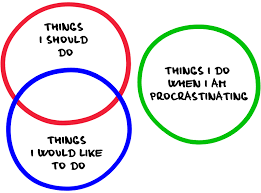Understanding Different Types of Procrastinators

April 28, 2023
Procrastination. The act of delaying or postponing a task or decision, often in favor of more enjoyable or less challenging activities. Procrastination often has a negative connotation to it, and is often seen as a bad habit to inherit. It is a common behavior that can lead to stress, missed deadlines, and poor performance. To many procrastination can create unnecessary stress and anxiety, as people often feel guilty or ashamed for not taking action on a task that needs to be done. It can also damage relationships and professional reputation, as missed deadlines or poor performance can affect others who depend on the completion of that task.
So the question is: Can procrastination be used as an advantage? Can someone really put everything off until the last minute and still succeed?
While procrastination is often perceived negatively, it is necessary to recognize that it can have both advantages and disadvantages. Despite its potential disadvantages, some people argue that procrastination can be a useful tool when used “strategically”. It is important to understand the different types of procrastinators. Although everyone is different when it comes to procrastinating, there are two most common types of procrastinators found in people; passive and active procrastinators.
A passive procrastinator is a person who procrastinates by avoiding tasks or situations that cause them discomfort or anxiety. Rather than facing the task or situation directly, the passive procrastinator may engage in avoidance behaviors such as distractions, or excuses. Passive procrastinators typically lack motivation. Active procrastinators, on the other hand, thrive on the adrenaline rush that comes from working under pressure. They may intentionally delay starting a task until the last minute, in order to experience the heightened sense of focus and energy that comes from working against the clock. During this delay, they may get other tasks done in the process to distract them from their major task. They may feel in control of their procrastination behavior and may not experience any negative consequences.
To have a better understanding, suppose that there is a report that needs to be submitted in the next two weeks. The active procrastinator will think about how long it may take them to finish the report then set a time when to start it, like maybe four days before the deadline. This procrastinator believes that four days are adequate to finish the assignment and that the remaining days could be used for more enjoyable tasks. Once again this can vary amongst people. On the other hand, the passive procrastinator will put off the report and utilize their free time doing more favorable things, such as browsing through the internet for hours. As the deadline inches closer and closer, then they will feel a rush to complete it. This sense of urgency is also known as “panic mode.”
I believe there is an obvious ideal type of procrastinator here. But everyone can vary. Yes, slowly building up good time management skills can help a lot, but so can working under pressure. The closer you are to a specific deadline, the more fear you get of the consequences of not getting it done. This causes an adrenaline build up, and with this adrenaline, typically comes energy. The energy to work on the task. One study conducted by the American Psychological Association found that about 45% of surveyed individuals reported that they perform better under pressure, compared to the 35% who reported that pressure has no effect on their performance, and the 20% who reported that pressure negatively affects their performance.
One thing you can’t miss about procrastinating is the final gratification of getting the task done. Whether you got it done much earlier or right before the deadline, I’m sure we all felt that bit of relief when we were finally done with it.
While procrastination can have advantages, it is important to recognize that it can also lead to negative consequences. However, understanding the different types of procrastinators can provide insight into how to use procrastination strategically. Active procrastinators, who thrive on working under pressure, may use their time procrastinating to prepare for the task and complete other tasks, whereas passive procrastinators may use tasks to distract themselves from the main task. While some people may perform better under pressure, it is important to not rely solely on procrastination and to develop good time management skills. Ultimately, the gratification of completing a task, whether it is done earlier or right before the deadline, can be satisfying. What type of procrastinator are you?
Information Links —-
https://www.youtube.com/watch?v=Ymlyeu-tHMY&list=LL&index=46
https://www.youtube.com/watch?v=S9Aesz3RPLw&list=LL&index=45
https://www.youtube.com/watch?v=FWTNMzK9vG4&list=LL&index=47
https://www.youtube.com/watch?v=FQMwmBNNOnQ&list=LL&index=48

